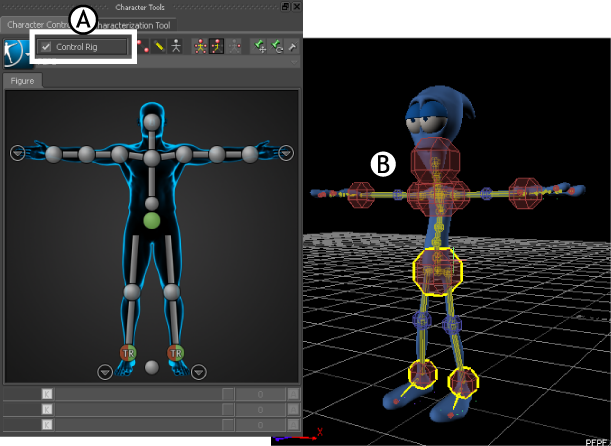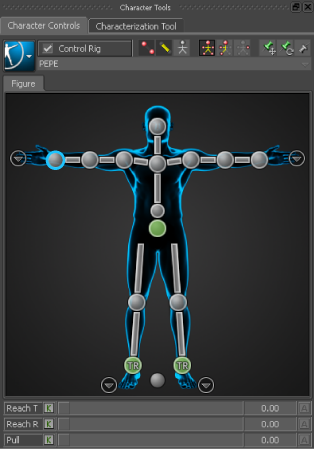The following procedure shows you how to export a 3ds Max character to MotionBuilder.
To export the 3ds Max Pepe character:
The Pepe.max scene file opens, displaying a biped skeleton inside a mesh.

3ds Max biped skeleton inside a mesh

3ds Max Pepe character imported into MotionBuilder
To characterize your Character:
X-Ray mode lets you see through the character skin to the skeleton underneath.

3ds Max Biped Template asset applied to the Pepe Character skeleton
The 3ds Max Biped template is specially designed for bipeds created in 3ds Max as they have a different naming structure that the MotionBuilder Character does not recognize automatically.
The Characterization tool shows green if the characterization is correct, yellow if potential problems are detected, and red if there is an element of the skeleton matching that is incorrect.

Character Controls Edit menu
You must use the Control Rig Input setting if you intend use keyframe animation on your biped.
Effectors appear on the biped as shown in the following figure.

A. Ctrl Rig In activated B. Effectors appear on the character
The Character representation is a human form, meant to represent the character’s skeleton. It displays all the effectors you need to animate the biped's Control rig. The biped is now rigged and ready to receive animation.

Right Wrist effector selected

Notice as you move the hand, the arm extends and the rest of the body follows in a natural movement.
You can now animate your character with motion capture and key frame animation.